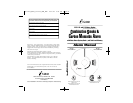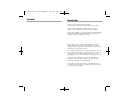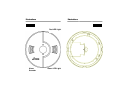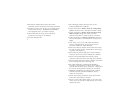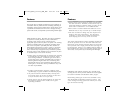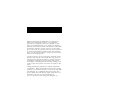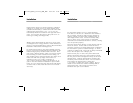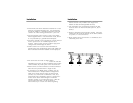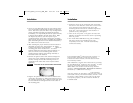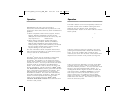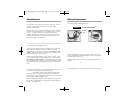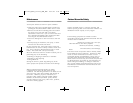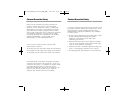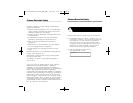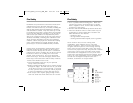
Wiring
Wiring Requirements:
• This Smoke/CO Alarm should be installed on a CSA
listed or recognized junction box. All connections
should be made by a qualified electrician and must
conform to codes having jurisdiction in your area.
• The appropriate power source is 120 V AC Single
Phase supplied from a non-switchable circuit, which
is not protected by a ground fault interrupter.
• The alarm should not be operated on power derived
from a square wave or modified square wave
inverter. These power sources produce high peak
voltages that will damage the alarm.
• Smoke alarms are not to be used with detector
guards unless the combination (alarm and guard) has
been evaluated and found suitable for that purpose.
Wiring For AC Quick-Connect Harness:
CAUTION: Turn off the main power to the circuit
before wiring the alarm.
• For alarms that are used as single station, do not
connect the red wire to any t h i n g. Leave the red wire
insulating cap in place to make certain that the red wire
cannot contact any metal parts or the electrical box.
• When alarms are interconnected, all interconnected
units must be powered from a single circuit.
• A maximum of 24 Kidde safety products may be
interconnected in a multiple station arrangement:
Limit of 12 smoke alarms and/or 18 alarms total
(smoke, CO, Smoke/CO Combination, heat, etc.).
This Smoke/CO Combination alarm is counted as a
smoke alarm when determining the maximum
number of units on an interconnect line. With 18
alarms interconnected, it is still possible to
interconnect up to a total of 6 remote signaling
I n s t a l l a t i o n
I n s t a l l a t i o n
1312
devices and/or relay modules (see Page 16 for
details on interconnecting Kidde devices).
• The maximum wire run distance between the first
and last unit in an interconnected system is 305 m
(1000’).
• Figure 1 illustrates interconnection wiring. Improper
connection will result in damage to the alarm, failure
to operate, or a shock hazard.
• Make certain alarms are wired to a continuous (non-
switched) power line.
NOTE: Use standard CSA listed household wire
(18 gauge or larger as required by local codes) available
at all electrical supply stores and most hardware stores.



